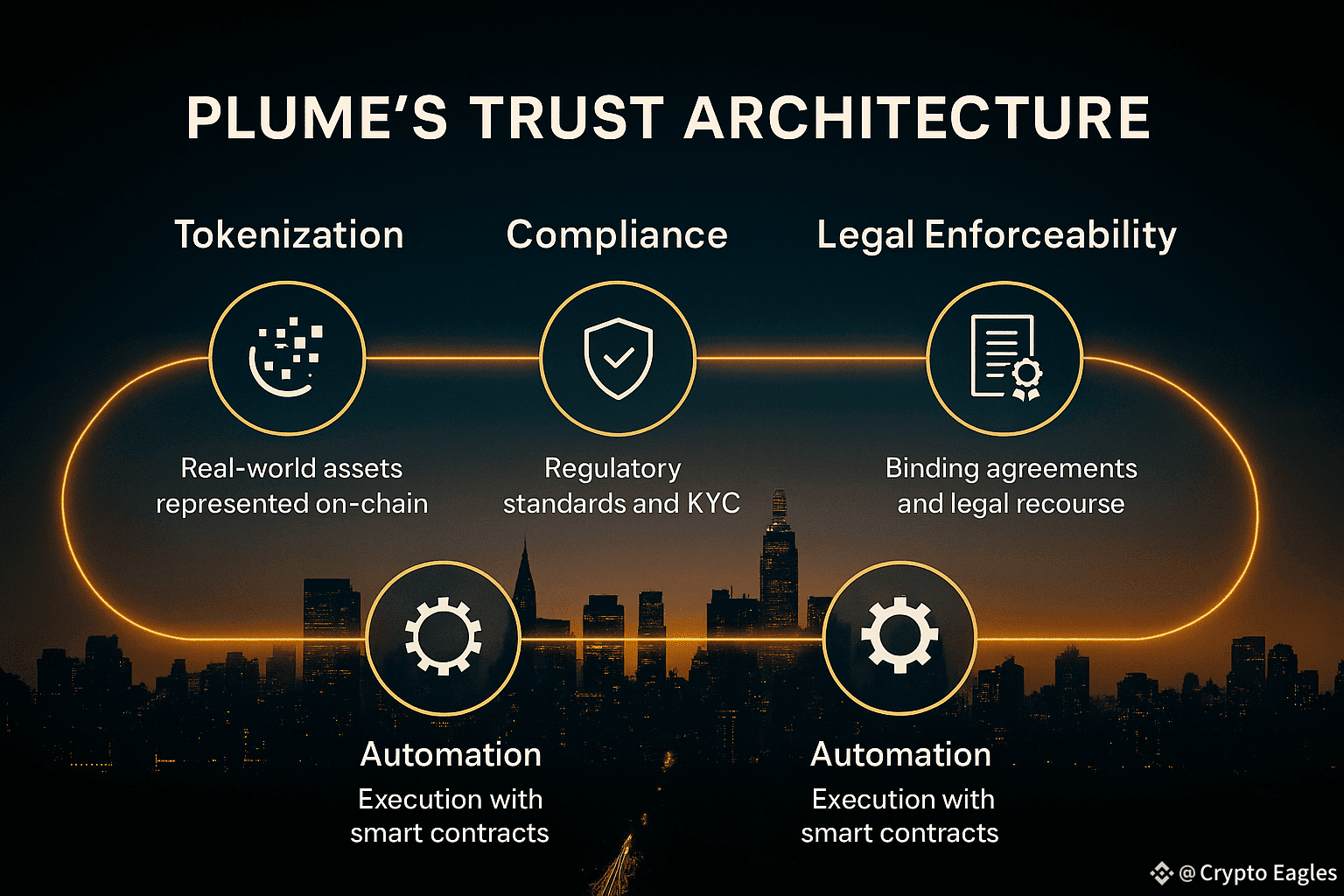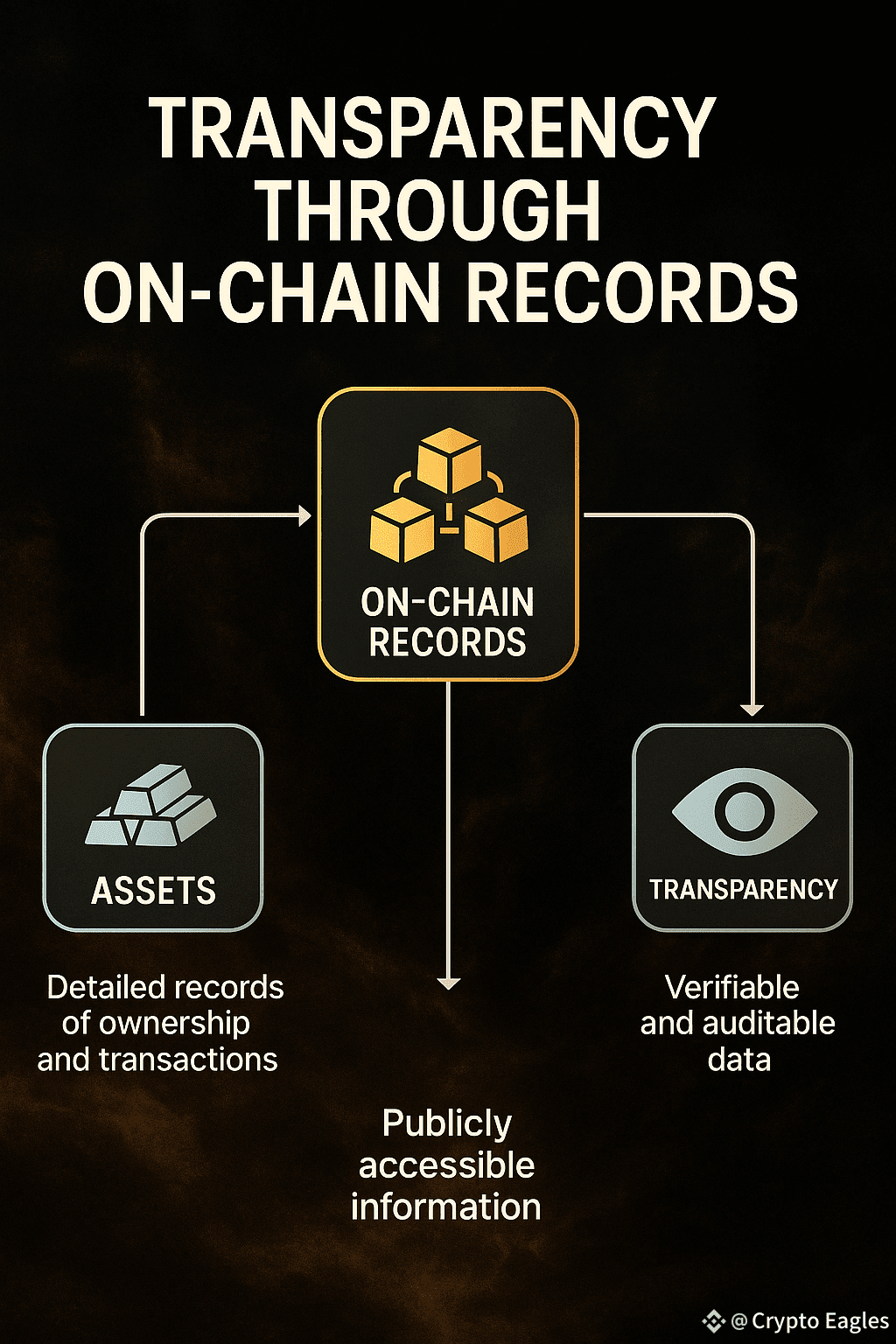Plume Network redefining Trust in the Digital Economy
Trust has always been the invisible backbone of finance. Investors trust that their assets are safe, issuers trust that capital will be delivered, and regulators trust that rules will be followed. Yet in practice, this trust has often been fragile, dependent on intermediaries, opaque records, and systems that are far from efficient. In the digital economy, where value moves across borders at the speed of light, the old models of trust are no longer sufficient. This is the space where Plume Network is emerging as a powerful force, redefining how trust is established, maintained, and scaled in the tokenization of real world assets.
The Historical Role of Trust in Finance
Before diving into Plume, it is worth remembering how trust has traditionally been created in financial systems. Banks, custodians, rating agencies, and legal frameworks were all built to assure participants that obligations would be honored. But these intermediaries came at a cost. They slowed down transactions, increased fees, and created barriers to access.
In global capital markets, trust gaps are even more significant. An investor in one country may hesitate to fund a project in another because of uncertainty around legal enforceability or counterparty risk. These barriers have limited cross-border capital flows and left many opportunities untapped. Blockchain promised to automate trust through code and transparency, but early implementations focused on crypto-native tokens without solving the harder problems of real world enforceability. Plume is tackling this head-on.
Plume’s Trust Architecture
Plume’s greatest innovation lies in embedding trust directly into its infrastructure. Its architecture weaves together legal compliance, programmable enforcement, and transparent records, creating a multi-layered trust system that does not rely solely on reputation or intermediaries

At the base layer, tokenization ensures that real world assets are represented on-chain in a standardized, auditable way. This alone creates trust by reducing ambiguity. On top of this, compliance modules ensure that participants meet regulatory requirements, reducing the risk of illicit activity. Smart contracts automate obligations like yield distribution, while interoperability features ensure that assets can flow across ecosystems without friction. Together, these components form what might be called Plume’s “Trust Stack.”
Legal Enforceability as the Foundation
For real world assets, the ultimate test of trust is whether token ownership maps to enforceable rights off-chain. Plume addresses this through legal wrappers and compliance standards that tie each token to recognized contracts or asset registries. If disputes arise, holders have recourse not only on-chain but in traditional legal systems.
This fusion of blockchain immutability with legal recognition bridges a longstanding gap. Investors are not just holding a digital claim but a legally valid instrument. For issuers, this increases confidence that capital raised through Plume will be viewed as legitimate by regulators and institutions.
Transparency Through On-Chain Records
Another pillar of trust is transparency. In traditional finance, opacity often benefits intermediaries but harms investors. Hidden fees, delayed reporting, and lack of visibility into risk are common issues.
Plume flips this by making asset data transparent on-chain. Ownership records, transaction histories, and even performance metrics can be embedded into token metadata. This reduces information asymmetry and allows investors to make decisions based on real-time insights. For regulators, it provides a clear audit trail. Transparency becomes a feature, not an afterthought

Automation of Obligations
Trust also depends on the reliable fulfillment of obligations. In traditional systems, coupon payments, dividends, or loan repayments often rely on manual processes or intermediaries. Delays and errors are common.
Plume introduces automation through smart contracts. Payments can be programmed to flow directly to token holders based on predefined schedules or triggers. Compliance checks can be automated at the transaction level. Distributions from renewable energy revenues or credit repayments can be streamed in real time. Automation reduces human error and ensures that trust is not based on promises but on code.
Building Trust Across Borders
Cross-border finance is plagued by distrust. Investors worry about enforcement in unfamiliar jurisdictions. Issuers face skepticism from international buyers. Plume addresses this by standardizing how assets are tokenized and by providing compliance frameworks that are globally recognized.
Through interoperability, assets issued on Plume can reach investors across chains and geographies, while retaining their legal enforceability. This means a project in one country can raise capital from participants worldwide without each counterparty needing to navigate different systems of trust. For emerging markets, this could be transformative, unlocking access to global capital that was previously out of reach.
The Role of Community in Trust
Trust is not only a matter of code and law—it is also social. Communities shape perceptions of legitimacy and adoption. Plume integrates governance mechanisms that give token holders and stakeholders a voice in ecosystem decisions. This participatory model ensures that trust is not imposed from above but co-created by the network.
When communities can vote on standards, oversight mechanisms, or even which projects are prioritized, they are more invested in the system’s integrity. This builds resilience and prevents concentration of power that could erode trust.
Institutional Confidence
Institutions are cautious by nature, but they control vast pools of capital. For them to engage with tokenization, they must trust that systems meet their rigorous standards. Plume’s compliance-first design and regulatory engagement directly address this requirement. By embedding KYC/AML, accreditation checks, and legal enforceability, Plume creates an environment where institutions can participate without fear of reputational or regulatory fallout.
This institutional confidence is critical not just for Plume’s growth but for the broader adoption of tokenized finance. Once institutions deploy meaningful capital, network effects accelerate, liquidity deepens, and trust becomes self-reinforcing.
Resilience Against Systemic Risk
Trust also depends on resilience. Financial crises often emerge when opaque risks accumulate unchecked. By making asset flows transparent and obligations automated, Plume reduces the chance of hidden vulnerabilities. Moreover, decentralized governance and distributed infrastructure provide resilience against single points of failure.
In a world where systemic shocks are increasingly global—whether from economic crises, pandemics, or geopolitical events—Plume’s model offers a more robust foundation for financial trust.
The Psychological Dimension of Trust
Beyond technical and legal frameworks, trust also has a psychological dimension. Retail investors, especially, need confidence that what they are buying is real and secure. By aligning user experience with transparency and automation, Plume can build that psychological trust. Clear dashboards, auditable records, and consistent delivery of yields help create a sense of reliability that is essential for mainstream adoption.
Challenges in Building Trust
Building a new model of trust is not without obstacles. Regulatory fragmentation means that enforceability may vary across jurisdictions. Education is needed to help participants understand tokenized instruments. Market manipulation or illiquidity could still erode confidence if not carefully managed.
Plume must also guard against over-promising. Trust, once broken, is hard to rebuild. Careful communication, conservative claims, and strong security practices are essential.
Why Plume’s Model Stands Out
Despite the challenges, Plume’s approach stands out because it does not treat trust as an abstract ideal but as a practical design principle. By combining legal enforceability, compliance, transparency, automation, and community governance, it creates a holistic model of trust that is rare in the blockchain space. Most projects focus on one or two of these dimensions. Plume integrates them all.
Long-Term Implications
If Plume succeeds, the implications extend far beyond tokenized assets. It could change how global finance itself operates. Imagine a world where trust in financial instruments is no longer dependent on opaque intermediaries but is transparent, programmable, and universally enforceable. Imagine a world where capital can flow freely across borders without sacrificing compliance or security.
This vision aligns not only with the needs of crypto users but with the needs of global institutions and regulators. Trust becomes the common denominator that bridges the gap between traditional finance and decentralized systems.
Conclusion
Plume Network’s contribution to the digital economy goes beyond efficiency or liquidity. It is fundamentally about trust, the most valuable currency in finance. By embedding trust into its architecture through compliance, legal enforceability, transparency, and automation, Plume is redefining what it means to trust in a digital, borderless world.
For investors, issuers, and institutions, this means new opportunities with greater confidence. For regulators, it means innovation aligned with oversight. For communities, it means participation in shaping the integrity of the system. If Plume continues to execute on this vision, it will not only become the home of real world assets on-chain but also the standard for how trust is built in the digital age.
@Plume - RWA Chain #Plume #plume $PLUME




